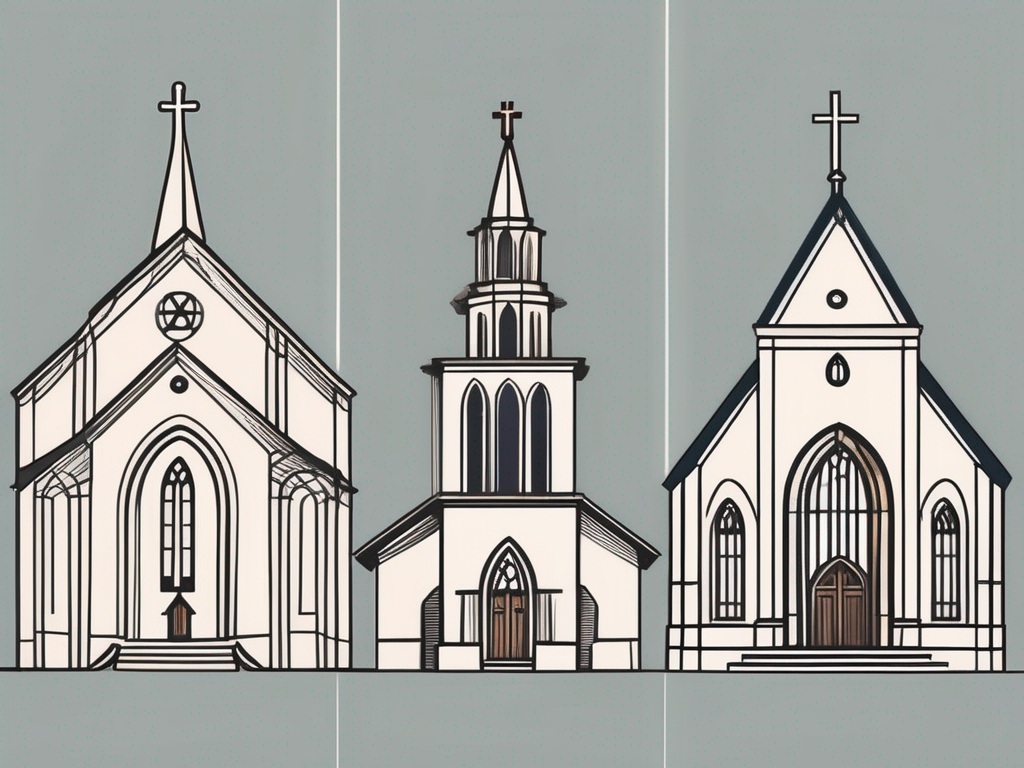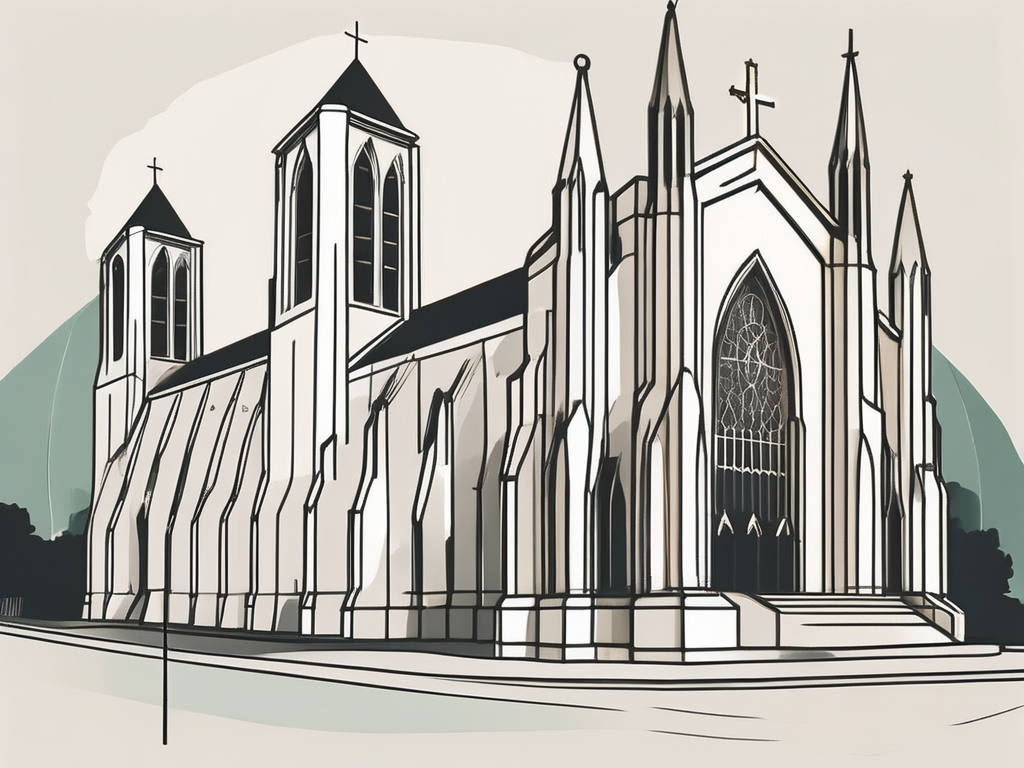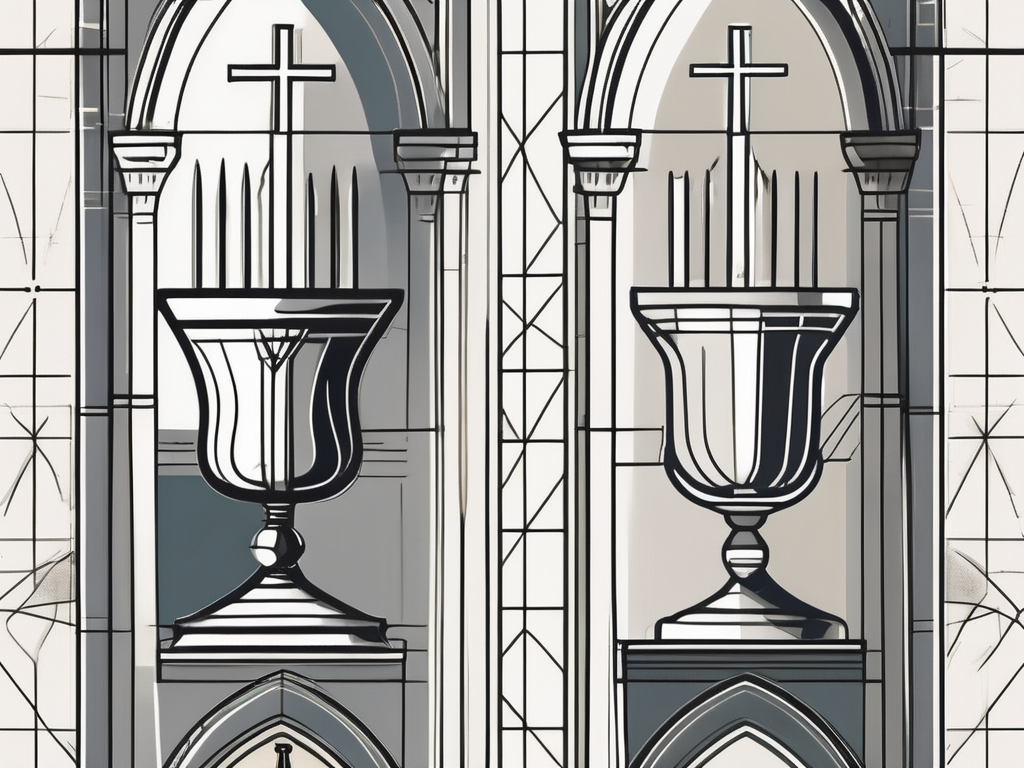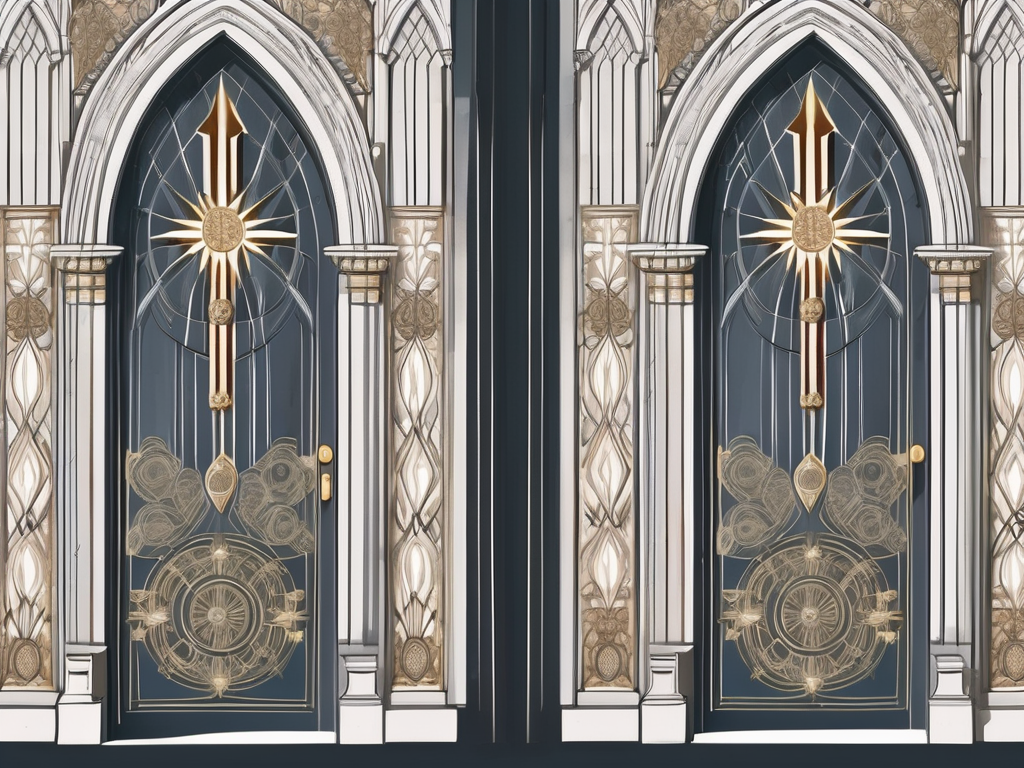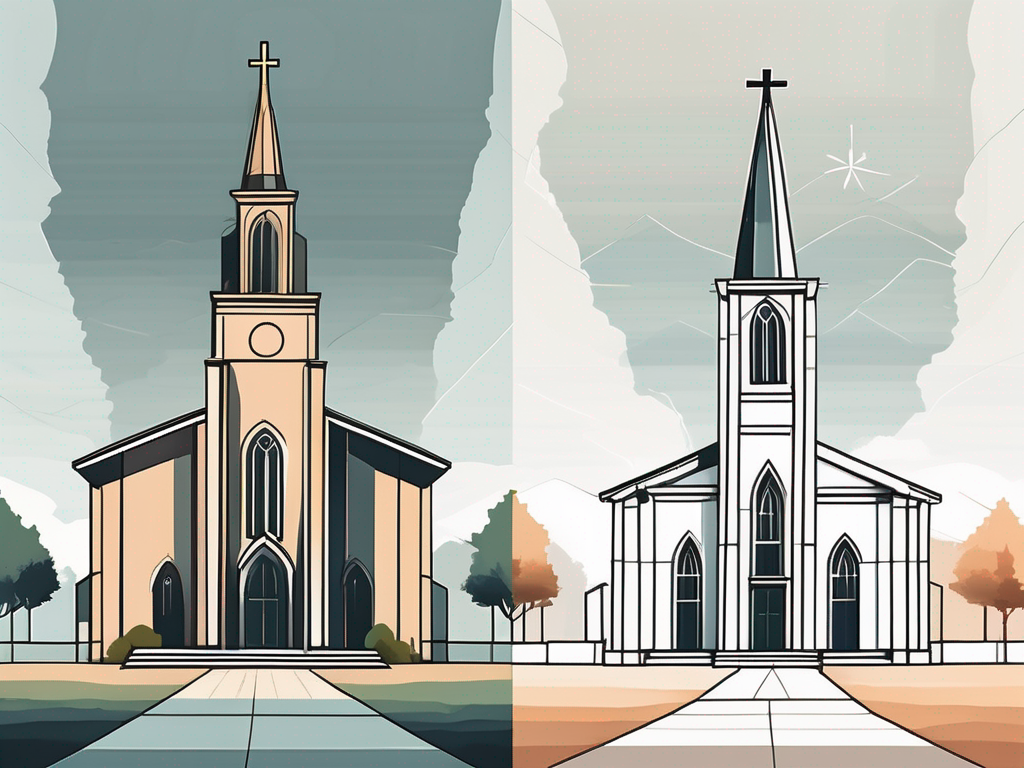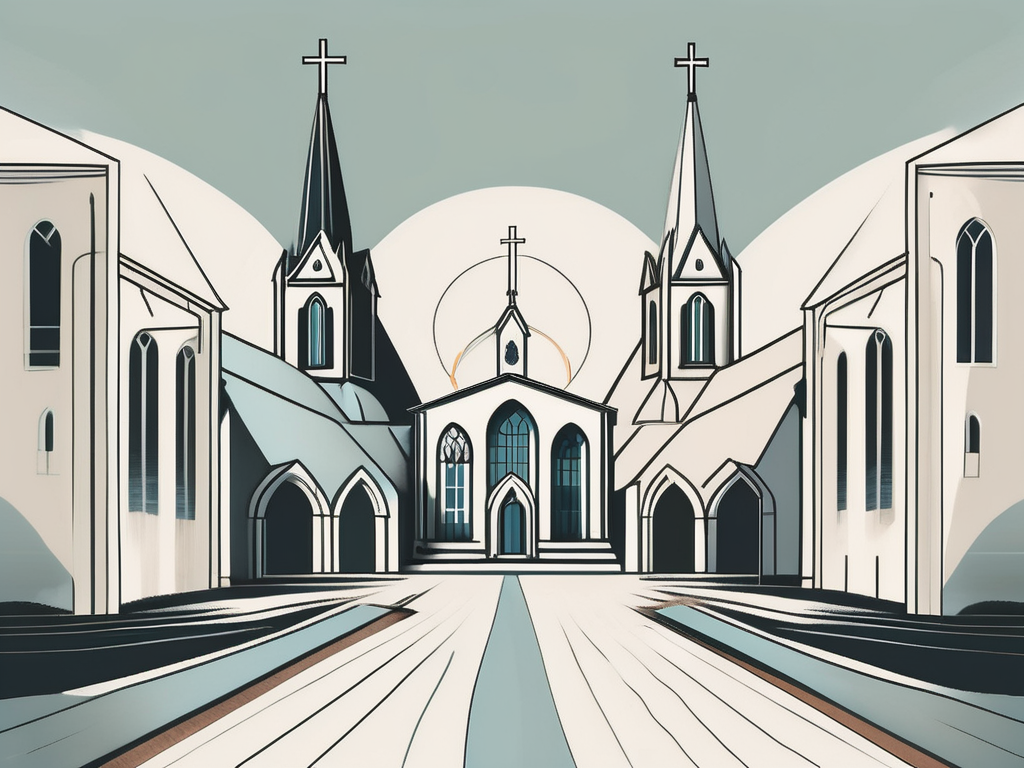Religion has always been a vital part of human history and culture, shaping societies and individuals in profound ways. One of the most influential religious divisions in the world is the distinction between Catholicism and Protestantism. While both fall under the umbrella of Christianity, they have distinct differences in their history, beliefs, practices, and interpretation of the Bible. Understanding these differences and similarities can provide valuable insights into the complexity of the Christian faith.
Historical Background of Catholicism and Protestantism
The roots of Catholicism can be traced back to the birth of Christianity itself. It emerged as the dominant form of Christianity in the early centuries after the death of Jesus Christ. Led by the papacy, the Catholic Church became an influential institution in Europe and played a prominent role in political and social affairs.
During the Middle Ages, the Catholic Church held immense power and authority. It was not only a religious institution but also a political force, with the pope often exerting significant influence over kings and emperors. The Catholic Church’s teachings and sacraments were central to the lives of the faithful, who sought spiritual guidance and salvation through the Church.
Protestantism, on the other hand, originated as a response to the perceived corruption and excessive power of the Catholic Church during the 16th century. Led by reformers such as Martin Luther, John Calvin, and Huldrych Zwingli, Protestantism sought to reform certain aspects of Catholic doctrine and practice.
One of the key issues that sparked the Protestant Reformation was the sale of indulgences. The Catholic Church had been offering indulgences, which were pardons for sins, in exchange for donations to fund the construction of St. Peter’s Basilica in Rome. This practice was heavily criticized by Martin Luther, who believed that salvation should be based on faith alone, not on monetary contributions.
Another important aspect of Protestantism was the emphasis on the authority of the Bible. The reformers argued that the Bible should be the ultimate source of religious authority, rather than the teachings of the Church. This led to the translation of the Bible into vernacular languages, making it more accessible to the general population.
The Protestant Reformation had a profound impact on Europe. It led to the splintering of the Christian faith into numerous Protestant denominations, each with its own interpretation of the Bible and distinct practices. This fragmentation of Christianity resulted in religious conflicts and wars, such as the Thirty Years’ War, which devastated parts of Europe.
Despite the divisions caused by the Reformation, Catholicism remained the dominant form of Christianity in many parts of Europe. The Catholic Church responded to the challenges posed by Protestantism through the Council of Trent, which reaffirmed Catholic doctrine and initiated reforms within the Church.
Today, Catholicism and Protestantism continue to be major branches of Christianity, with millions of followers around the world. While they share a belief in Jesus Christ as the Son of God and the Savior, there are significant theological and liturgical differences between the two traditions.
In conclusion, the historical background of Catholicism and Protestantism is a complex and fascinating story. It encompasses the rise of the Catholic Church as a powerful institution in Europe, the challenges posed by the Protestant Reformation, and the subsequent divisions within Christianity. Understanding this history is crucial for comprehending the religious landscape of the present day.
Core Beliefs and Practices
When it comes to core beliefs, Catholicism and Protestantism share many fundamental tenets of Christianity. Both believe in the Trinity, the divinity of Jesus Christ, and the importance of salvation through faith. However, there are also significant differences in how these beliefs are practiced and understood.
In Catholicism, there is a strong emphasis on the authority of the Pope, who is seen as the direct successor of Saint Peter, the first Pope. The Pope is considered to be the Vicar of Christ on Earth, and his teachings and decisions are regarded as infallible. This belief in the authority of the Pope is a defining characteristic of Catholicism and sets it apart from Protestantism.
Another key aspect of Catholicism is the sacraments, such as baptism and the Eucharist. These sacraments hold great significance in Catholic worship and are believed to be channels of God’s grace. Baptism is seen as the initiation into the Christian community, while the Eucharist, also known as Holy Communion, is the central act of worship in which Catholics believe they receive the body and blood of Christ.
Furthermore, the role of tradition, alongside the Bible, is crucial in shaping Catholic beliefs and practices. Catholicism recognizes the authority of the Church’s teachings and traditions, which have been passed down through generations. The interpretation of the Bible is guided by the teachings of the Church, and the Magisterium, which consists of the Pope and the bishops, has the authority to define and interpret doctrine.
Fundamental Beliefs of Catholicism
Catholicism places a strong emphasis on the authority of the Pope, who is seen as the direct successor of Saint Peter, the first Pope. The Pope is regarded as the visible head of the Church, and his teachings and decisions are considered to be guided by the Holy Spirit. Catholics believe that the Pope has the ability to speak infallibly on matters of faith and morals, ensuring the unity and consistency of the Church’s teachings.
In addition to the authority of the Pope, Catholicism also upholds the belief in the communion of saints. This belief holds that all members of the Church, both living and deceased, are connected in a spiritual bond. Catholics believe that the saints, who have lived holy lives and are now in heaven, can intercede on behalf of the faithful and pray for them. This belief in the intercession of saints is an important aspect of Catholic devotion and is often seen in the practice of praying to specific saints for their intercession.
Key Tenets of Protestantism
Protestantism, in contrast, emphasizes the authority of the Bible as the sole source of religious truth. The Protestant Reformation, led by figures such as Martin Luther and John Calvin, sought to reform the Catholic Church and return to a more biblical understanding of Christianity. The principle of “sola scriptura,” meaning “Scripture alone,” became a central tenet of Protestant theology.
Another key belief in Protestantism is the priesthood of all believers. Protestants believe that all individuals have direct access to God without the need for intermediaries, such as priests or the Pope. This belief emphasizes the personal relationship between the individual and God, and it encourages believers to read and interpret the Bible for themselves.
Protestant worship can be more varied and less formal compared to Catholic rituals. While Catholic worship often follows a set liturgy and includes sacraments, Protestant worship can take on different forms, ranging from traditional hymns and sermons to contemporary music and informal gatherings. The emphasis is often placed on preaching and teaching the Word of God, with the aim of helping believers grow in their faith and understanding of Scripture.
Furthermore, Protestantism encompasses a wide range of denominations and traditions, each with its own distinct beliefs and practices. From the Lutheran tradition to the Reformed tradition, from Baptist to Methodist, Protestantism is characterized by its diversity and the freedom of individual interpretation.
The Role of the Church and Clergy
The Catholic Church possesses a highly structured hierarchy with the Pope as the spiritual leader, followed by cardinals, bishops, and priests. The clergy plays a central role in administering the sacraments and guiding the faithful. The church is seen as the mediator between God and humankind.
Within the Catholic Church, the role of the clergy extends beyond the administration of sacraments. They are also responsible for providing pastoral care to the members of their congregations. This includes offering spiritual guidance, counseling, and support during times of joy and sorrow. The clergy often play a crucial role in helping individuals navigate through life’s challenges and finding solace in their faith.
Furthermore, the clergy is entrusted with the responsibility of preserving and passing on the teachings of the Church. They are the custodians of the Church’s traditions and doctrines, ensuring that the faithful have access to the rich theological heritage of the Catholic faith. Through their preaching and teaching, the clergy help to deepen the understanding and knowledge of the members of the Church, fostering a strong sense of unity and shared beliefs.
On the other hand, Protestant denominations have various forms of church governance. While some have ordained pastors and clergy, others emphasize the priesthood of all believers, where each individual is considered a minister. The role of the clergy can vary, ranging from pastoral counseling to leading worship services.
In Protestant churches with ordained pastors, the clergy often serve as spiritual leaders and shepherds of their congregations. They are responsible for preaching the Word of God, leading worship services, and providing pastoral care to their congregants. This includes offering guidance, support, and counseling to individuals and families in times of need.
Additionally, the clergy in Protestant churches often play a vital role in community outreach and social justice initiatives. They are at the forefront of advocating for equality, justice, and compassion in society. Through their leadership and involvement in various community programs, the clergy strive to make a positive impact on the lives of those they serve.
It is important to note that while the role of the clergy may differ between Catholic and Protestant traditions, their common goal is to serve as spiritual guides and ministers of God’s love and grace. Whether it is through administering sacraments, providing pastoral care, or advocating for social justice, the clergy play a significant role in shaping the religious and spiritual lives of their respective communities.
Sacraments and Rituals
The Catholic Church recognizes seven sacraments, which are seen as signs of God’s grace and are central to the spiritual life of Catholics. These sacraments include baptism, confirmation, Eucharist, penance, anointing of the sick, holy orders, and matrimony. Each sacrament has its own significance and rituals associated with it.
Baptism, the first sacrament, is the initiation into the Christian faith. It is a ritual where water is poured or sprinkled on the person’s head, symbolizing purification and rebirth. The Catholic Church believes that through baptism, one becomes a member of the Church and is cleansed of original sin.
Confirmation is the sacrament where a baptized person receives the gifts of the Holy Spirit. It is usually performed by a bishop, who anoints the person with holy chrism oil and lays hands on them. This sacrament is seen as a strengthening of one’s faith and a deepening of their relationship with God.
The Eucharist, also known as Holy Communion, is the sacrament where Catholics receive the body and blood of Jesus Christ. This is done through the consecration of bread and wine, which Catholics believe becomes the actual body and blood of Christ. The Eucharist is considered the most important sacrament in the Catholic Church and is celebrated during Mass.
Penance, also known as confession or reconciliation, is the sacrament where Catholics confess their sins to a priest and receive absolution. This sacrament is seen as a way to reconcile with God and the Church, and to receive forgiveness for one’s sins. It involves the confession of sins, sincere repentance, and the performance of acts of penance.
Anointing of the sick, also known as the sacrament of the anointing of the sick or last rites, is performed on those who are seriously ill or near death. It involves the anointing of the person with holy oil and prayers for healing and strength. This sacrament is believed to bring spiritual and physical healing, as well as comfort and peace to the person receiving it.
Holy orders is the sacrament through which men are ordained as deacons, priests, or bishops. It involves the laying on of hands by a bishop and the prayer of consecration. Through this sacrament, men are given the authority to serve the Church and administer the other sacraments.
Matrimony, also known as marriage, is the sacrament where a man and a woman enter into a lifelong covenant with each other before God. It is a sacred union that is meant to reflect the love and unity between Christ and the Church. The couple exchanges vows and the sacrament is usually celebrated within the context of a Mass.
Among Protestants, sacraments are regarded differently. Most Protestant denominations only recognize two sacraments: baptism and communion. These sacraments, though important, are generally seen as symbolic acts rather than channels of divine grace. They are often performed in a less formal manner compared to Catholic sacraments.
Baptism in Protestant churches is seen as a public declaration of one’s faith and a symbolic washing away of sins. It is usually performed by immersion in water, symbolizing the person’s identification with the death and resurrection of Jesus Christ.
Communion, also known as the Lord’s Supper or the Eucharist, is seen as a commemoration of Jesus’ last supper with his disciples. Protestants believe that the bread and wine used in communion are symbolic of the body and blood of Christ, rather than being transformed into his actual body and blood.
While there are differences in the understanding and practice of sacraments between Catholics and Protestants, both traditions recognize the importance of these rituals in the spiritual life of believers. Sacraments serve as visible signs of God’s grace and are seen as means through which believers can experience a deeper connection with God and the community of faith.
Interpretation of the Bible
The Catholic Church places great importance on tradition alongside the Bible in shaping its beliefs and teachings. The Pope and the Magisterium (the teaching authority of the church) are seen as guides in interpreting Scripture. The Catholic Church also accepts the deuterocanonical books, which are not recognized as Scripture by most Protestant denominations.
In contrast, Protestantism emphasizes the individual’s interpretation of the Bible. With the belief in the priesthood of all believers, each person is encouraged to read and interpret the Bible independently. Different Protestant denominations may have varying approaches to Biblical interpretation, leading to diverse theological perspectives.
Understanding the Complexities
Exploring the differences and similarities between Catholicism and Protestantism is a fascinating journey into the complexities of the Christian faith. While both traditions worship the same God and share a common heritage, they have diverged significantly over the centuries. Recognizing and respecting these differences can promote a greater understanding and dialogue between the followers of these two major branches of Christianity.
Both Catholicism and Protestantism have made invaluable contributions to the religious and cultural tapestry of the world. By embracing their unique characteristics, we can not only deepen our own faith but also foster unity and mutual respect among believers of different Christian traditions.

